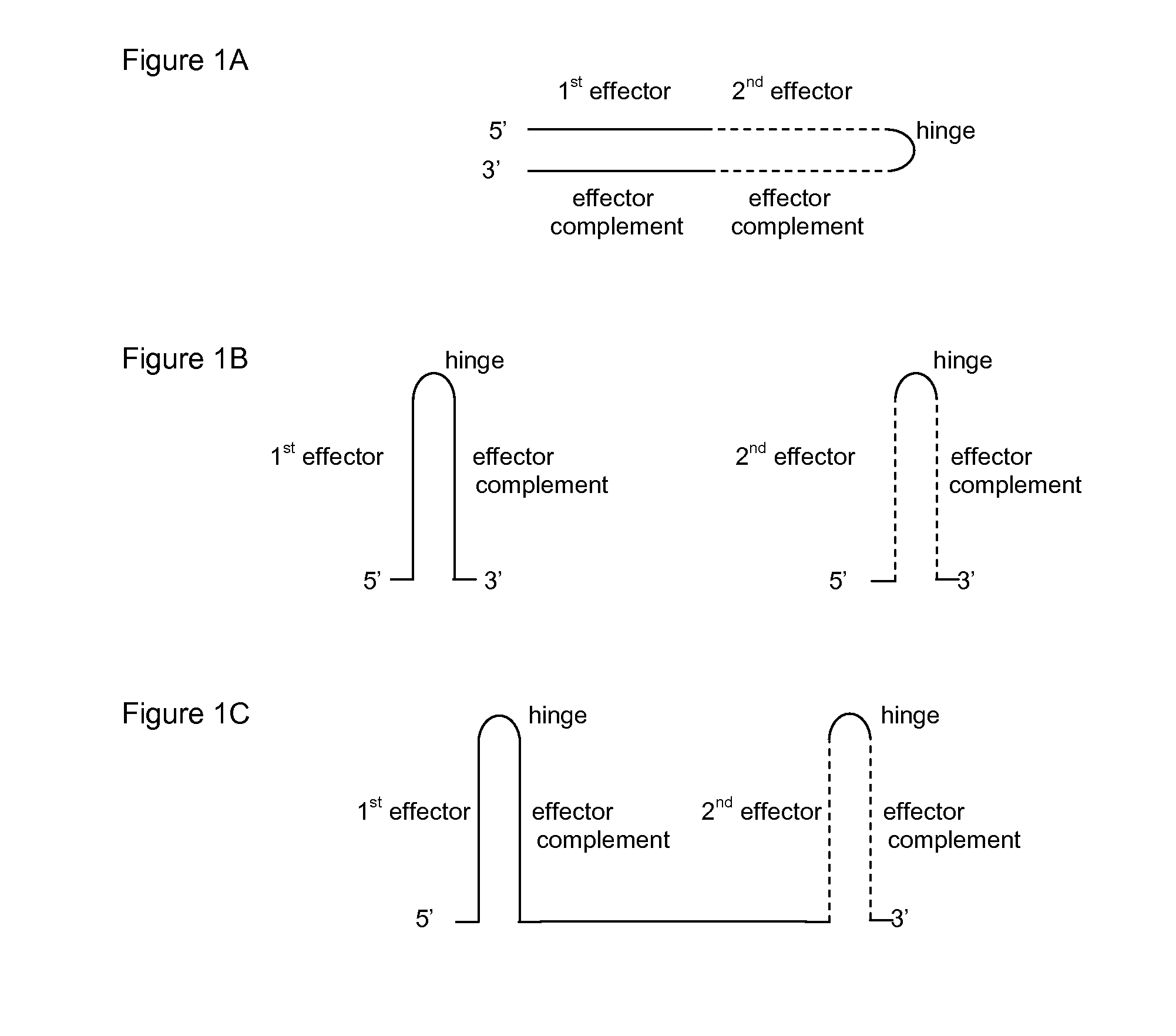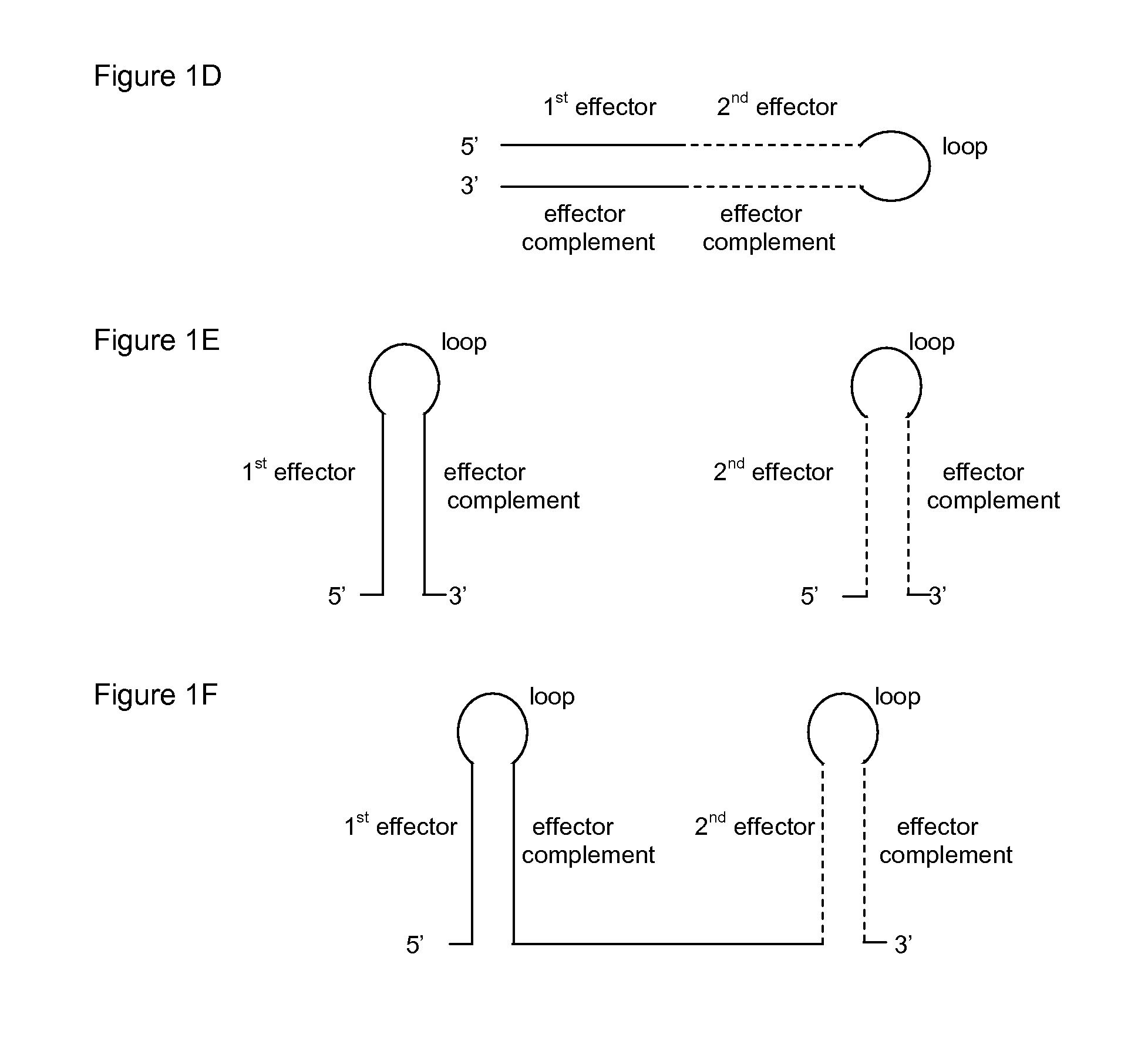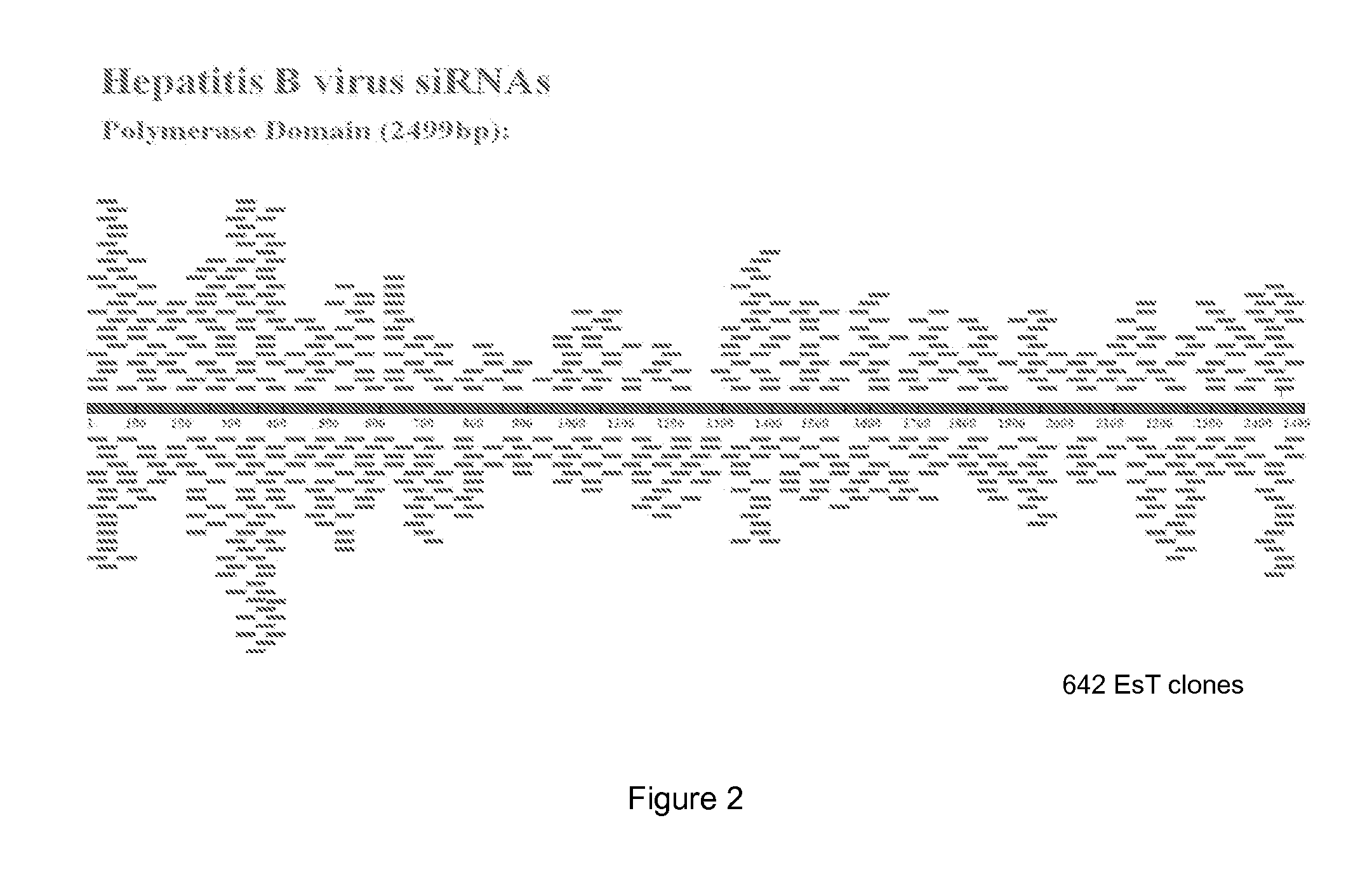Hbv treatment
a technology of rna interference and hbv, which is applied in the direction of biochemistry apparatus and processes, organic chemistry, and material ingredients, can solve the problems of viral resistance development of lamivudine therapy, and achieve the effect of “silencing” the gen
- Summary
- Abstract
- Description
- Claims
- Application Information
AI Technical Summary
Benefits of technology
Problems solved by technology
Method used
Image
Examples
example 1
Production of an Entire siRNA Target (EsT) Library
[0345]The full length HBV RNA-dependent DNA polymerase gene from HBV Adr-1 (Accession M38454) was sub-cloned and used to generate an Entire siRNA Target (EsT) library. 5000 clones were sequenced, of which 642 were identified as having non-repeat sequences ranging from 19-23 bp. The sequences, which represent potential targets for the ddRNAi agents of the invention, were distributed along the target gene (FIG. 2).
example 2
Large Scale Screening Results Using SECs with ≧50% Knock Down
[0346]To identify the most effective siRNA sequences which could then be used to prepare the ddRNAi agents of the invention, siRNA expression cassettes (SECs) amplified by PCR were transfected into HepG2 2.2.15 cells. Effects on the levels of HBV polymerase mRNA expression was evaluated to identify functional siRNA sequences.
[0347]40 siRNAs that corresponded to the first SECs screened were chemically synthesised and transfected into HepG2 2.2.15 cells to validate the original polymerase mRNA knock down levels. HepG2 2.2.15 is a stable cell line containing an integrated tandem dimer of the HBV genome (Genebank Accession #: U95551), and can stably express HBV antigens and HBV Dane particles. The correlation results are shown in FIG. 3.
[0348]As can be seen from FIG. 3, when SECs inhibition of polymerase expression was >50%, most of the corresponding synthetic siRNA sequences gave around 70% knockdown of HBV mRNA, and only 2 / 2...
example 3
Target Screening by siRNA Expression Cassettes (SECs).
[0349]FIG. 4 shows the results of large scale screening in vitro for inhibition of HBV mRNA accumulation (501 non-repeated siRNA agents). Of those sequences screened, 100 siRNA sequences were effective in knocking down HBV mRNA by ≧50%, 14 of which resulted in >70% knock down (Table 2). The distribution of the top 100 siRNA targets on the HBV polymerase gene is shown in FIG. 5A; any sequence can in turn be mapped on the polymerase. FIG. 5B for example maps the first 3 sequences.
TABLE 2SEQRelativeIDLengthmRNANORNAi effector sequence a(bp)expression1GAUUGACGAUAAGGGAGA180.12UUGAAGUCCCAAUCUGGAU190.143GCCGGGCAACGGGGUAAAGGUUC230.194UAUUUGCGGGAGAGGACAACAGAGUUAUC290.255UCCUGAUGUGAUGUUCUCCAUGU230.256AAGGCCUCCGUGCGGUGGGG200.267GGUAUUGUUUACACAGAAAGGC220.268GAUGUGUUCUUGUGGCAAG190.279GGGAAAGCCCUACGAACCACU210.2710GUGGAGACAGCGGGGUAGGC200.2811GAGGACAACAGAGUUAUC180.2912GCCCACUCCCAUAGGAAUUUUCC230.2913GGAUCUUGCAGAGUUUGG180.2914CGUUGCCGGGCAACGGGGUA2...
PUM
| Property | Measurement | Unit |
|---|---|---|
| Volume | aaaaa | aaaaa |
| Length | aaaaa | aaaaa |
Abstract
Description
Claims
Application Information
 Login to View More
Login to View More - R&D
- Intellectual Property
- Life Sciences
- Materials
- Tech Scout
- Unparalleled Data Quality
- Higher Quality Content
- 60% Fewer Hallucinations
Browse by: Latest US Patents, China's latest patents, Technical Efficacy Thesaurus, Application Domain, Technology Topic, Popular Technical Reports.
© 2025 PatSnap. All rights reserved.Legal|Privacy policy|Modern Slavery Act Transparency Statement|Sitemap|About US| Contact US: help@patsnap.com



